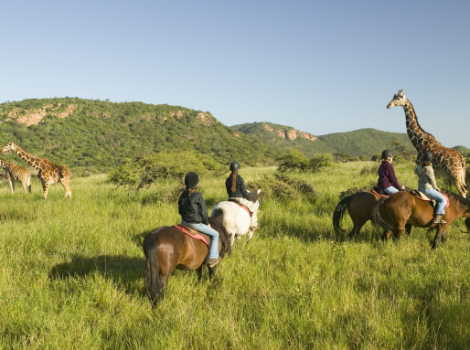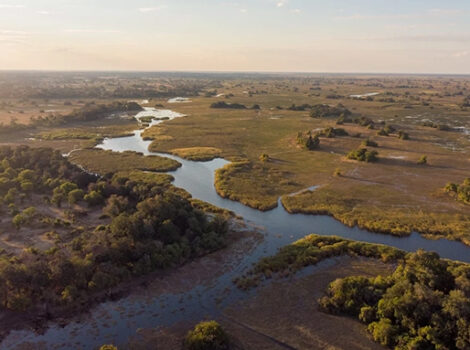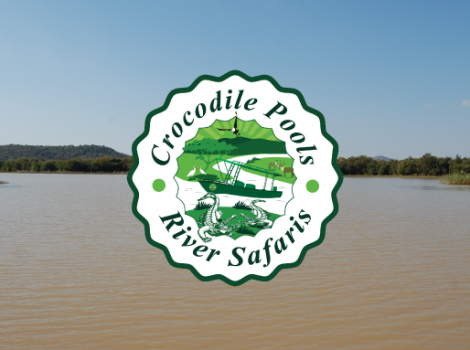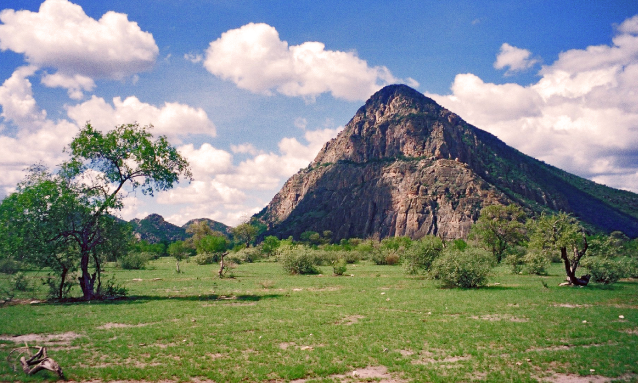
Picture credit Wildlife Wanderer
Due to its rich historical and cultural importance, Tsodilo was declared a UNESCO World Heritage Site in 2002. The site is owned by the Botswana government and as such, is protected in line with the Monuments and Relics Act 2001, conditions of the Anthropological Research Act 1967, Nationals Parks Act 1967 and the Tribal Act 1968.
Declared a National Monument in 1927, the Department of National Museum and Monuments and the Tsodilo Management Authority are charged with looking after Tsodilo Hills. The Tsodilo Management Authority is an independent advisory group, which comprises the Tsodilo Community Trust, community-based organisations, NGOs and a select number of critical government departments.
It goes without saying that the area is sacred and a national treasure. For that reason, in 1997 all relevant stakeholders developed and approved a management plan designed to ensure the conservation of all the site attributes. In 2007, an integrated management plan detailing community initiatives was developed. A Core Area Management Plan was developed with the help of the African World Heritage Fund in 2009. The main objective of all these management plans is a clear sign of the commitment to preserve the values of the site. Conservation work has been limited to preventive strategies without altering the art and its substrate.
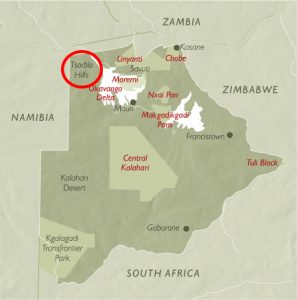 Where is it located?
Where is it located?
Located in north – west Botswana near the Namibian Border, the Tsodilo Hills are a small area of massive quartzite rock formations that rise from ancient sand dunes to the east and a dry fossil lakebed to the west in the Kalahari Desert.
Tsodilo Hills lie 53km south – west of Shakawe, on the banks of the Panhandle.
How to get there
From Maun, you’ll need to head towards Shakawe. The Hills are 40 km from Shakawe, a journey that will take you approximately 4 hours. The turn – off from the main Maun/Shakawe road is just south of Sepopa and is indicated with a National Museum signpost. From this point, you’ll need a four-wheel drive because this part of the journey is on an extremely rough dirt road.
Where to stay
Shakawe is the closest village to Tsodilo Hills and has no shortage of places to stay. You have the option of Drotsky’s Cabins, Xaro Lodge, Shakawe Fishing Lodge and Makwena Lodge.
Otherwise, you can go camping and be one with nature at the main campsite, which has access to ablutions and water at the Museum Headquarters.
There are another three, smaller campsites, which have no facilities.
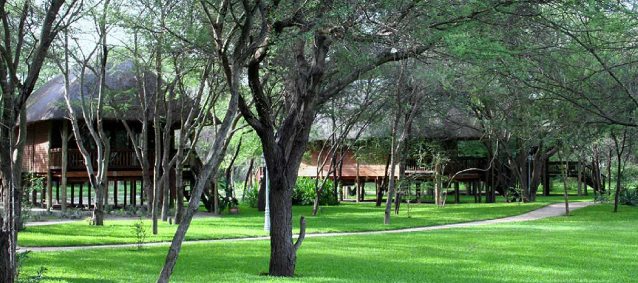
Drotsky’s Cabins
Excursions you can look forward to
While visiting the area, there’s the opportunity to climb and explore the hills and trails, as well as seeing for yourself evidence of earlier life that’s believed to go as far back as between 700- 900AD!
The walking trails include the Rhino Trail, Lion Trail and cliff Trail. It is recommended that you take a guide to walk the trails and see the paintings. Both San and Hambukushu live near the hills and are among the guides who can easily be arranged to show you around.
There is also a small museum at the entrance to the site.
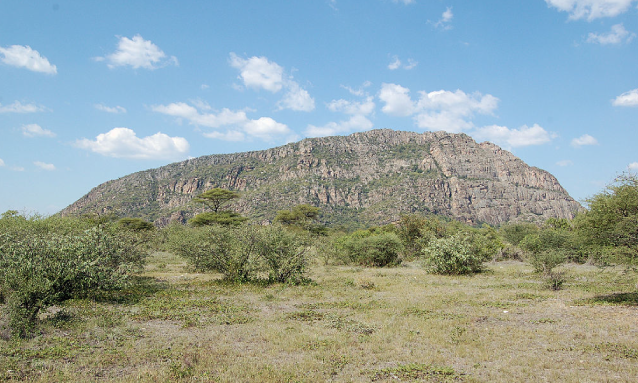
Picture credit Joachim Huber
8 Fascinating Facts About Tsodilo Hills
- The Hambukushu and San communities in the area revere Tsodilo as the sacred home of their ancestral spirits. That level of respect extends to the water holes and hills. Way back in time, their ancestors performed religious rituals to ask for assistance and for rain. They also put paintings on the rock face, the meaning and symbolism of which remain a mystery.
- Rising abruptly, and dramatically, from the Kalahari scrub bush, the rock face turns a copper colour in the fading sun. The magnetic power of Tsodilo Hills both captivates and mystifies. There is an undeniable spiritualism about the Hills that immediately strikes the visitor.
- The people who live in and around the Hills; the San, the original inhabitants, and the Hambukushu have periodically occupied the hills for the past 200 years.
- Archaeological research spanning the last thirty years estimates that Tsodilo has been inhabited for the past 100 000 years, making this one of the world’s oldest historical sites. Research findings state that pottery, iron, glass beads, shell beads, carved bone and stone tools found at the site date back 90 000 years!
- The Early Iron Age Site at Tsodilo, called Divuyu dates back to between 700- 900AD, and reveals that Bantu people have been living in the hills for over 1000 years, probably having come from central Africa. They are believed to have been cattle farmers who settled on the plateau and traded copper jewellery from the Congo, seashells from the Atlantic, and glass beads from Asia, probably in exchange for specularite and furs. There was a great deal of interaction between different groups, and trade networks were extensive. Excavations have also revealed over twenty mines that extracted specularite – a glittery iron-oxide derivative that was used in early times as cosmetics.
- Rock paintings are virtually everywhere within the area and are said to be amongst the region’s finest. It’s estimated that there are over 4 000 such rock paintings, comprising red finger paintings and geometrics. It is almost certain that the San did most paintings, while the pastoral Khoe, who later settled in the area, painted some. The red paintings date as far back as the first millennium AD.
- Tsodilo is totally removed from all other rock art sites in Southern Africa, adding to its magical aura. The nearest known site is 250 kilometres away. The paintings found at Tsodilo are generally unlike others in the southern African region in both style and incidence of certain images. The Tsodilo rock art has a higher incidence of domestic animals than any other site in Southern Africa.
- Tsodilo has one of the highest concentrations of rock art in the world and as such, is often referred to as the “Louvre of the Desert.” Over 4,500 paintings are preserves in an area of only 10 km2 of the Kalahari Desert.
Reference: whc.unesco.org, botswanatoursim.co.bw

